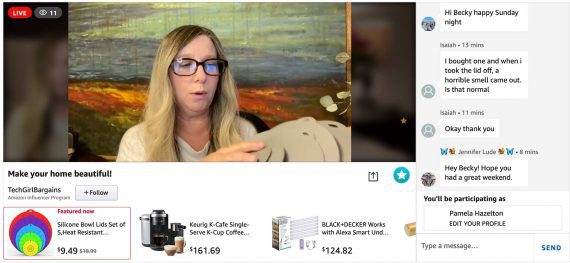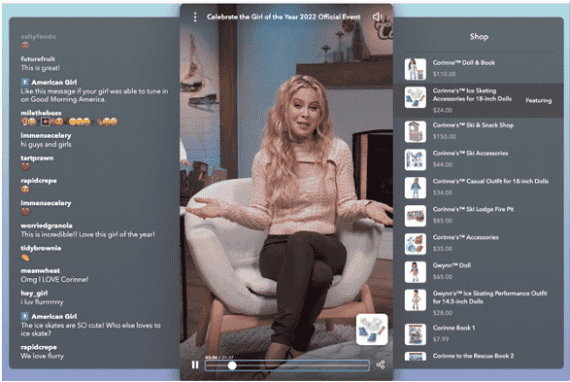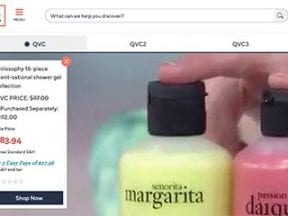During the 2022 holiday shopping season, Amazon hosted many live streams promoting a wide range of products. Amazon Live Events — a form of live-stream shopping — has thousands of creators and influencers selling products.
Live-stream selling is a proven marketing strategy. A personable host demonstrates products while shoppers can ask questions or talk about their experiences. It’s similar to QVC and the Home Shopping Network, except the audience is online.
Live-stream shopping began in China around 2017. It has since migrated to the United States and Europe. The tactic will generate $68 billion in U.S. sales by 2026, per Coresight Research. Merchants should act now, especially those who target Gen Zs and younger shoppers.
McKinsey Digital reports that 36% of live-stream purchases are apparel and fashion items; beauty accounts for about 8%, followed by fresh food, electronics, and home décor.

Amazon Live is home to thousands of content creators reviewing products for direct purchases.
New Conversion Tool
Live-stream selling focuses on shoppers’ desire to know more about a product and their tendency to impulse buy. It provides instant answers, minimizing the guesswork.
A well-presented live stream:
- Builds a community by engaging and communicating with consumers.
- Entices viewers to click the calls to action.
- Generates sales.
- Reduces pre-purchase support requests, including live chat.
- Lowers returns by providing essential details and answers.
Getting Started
There are four primary ways to incorporate live-stream selling.
- Via social media, selling directly on that platform or linking to the online store.
- On Amazon Live for marketplace sellers (at no cost).
- On a third-party live-selling network, such as YouTube, Firework, Vimeo, and others.
- Directly from the ecommerce site using a provider, for a fully-branded experience.
All methods require analysis and planning to determine the best for your audience.

American Girl live streamed its “Girl of 2022” event, pinning products during the feed. Source: Firework.
Costs associated with live-stream selling include:
- Monthly charges for hosting the events on-site, ranging from $40 to $20,000, depending on features, attendance, and more.
- Production expenses. A simple setup using a smartphone and ring light can run less than $50. But streaming from a professional-grade studio requires proper lighting and sound. Split-screen streaming takes additional work unless you loop through Zoom or similar.
- Fees to a spokesperson or influencer, which can cost more than enlisting employees to go on camera.
- Marketing, a must for live events. Deploy announcements via email and social media. Consider advertising, too.
Detailed analytics are crucial for live selling. Ensure your platform or provider can track:
- Abandonment rate,
- Points of entry and exit,
- Viewing times,
- Chat activity, ideally by communication types, such as host questions, testimonials, images
- Viewer reactions — like, love,
- Call-to-action clicks and funnel performance.
Also important are moderation tools, chat exports, and replay capabilities.
Not Too Distant
Livestream shopping will be an expected norm in the not-too-distant future, connecting online consumers as never before. This engaging content will be critical for ecommerce success.




